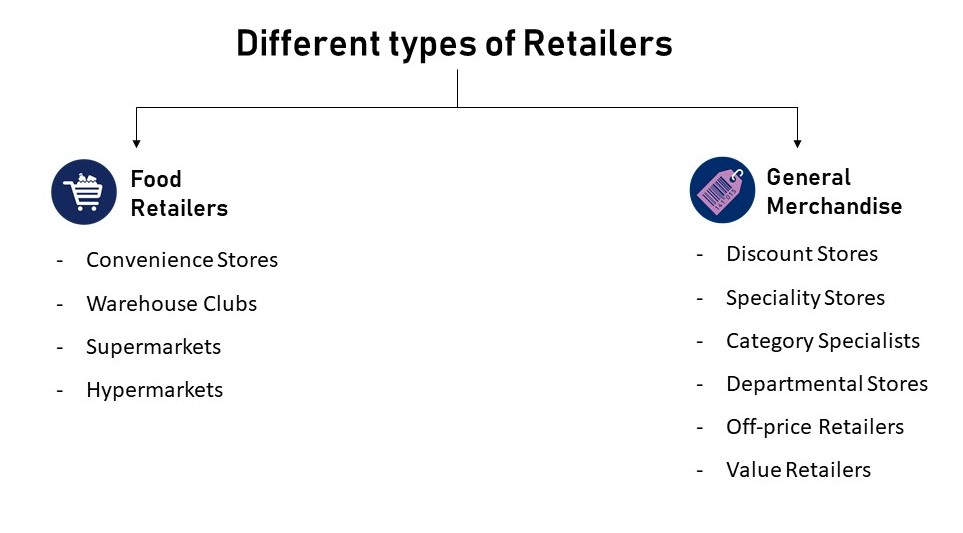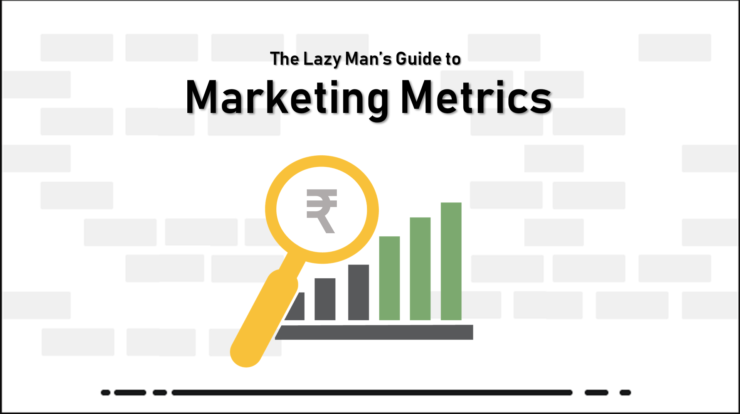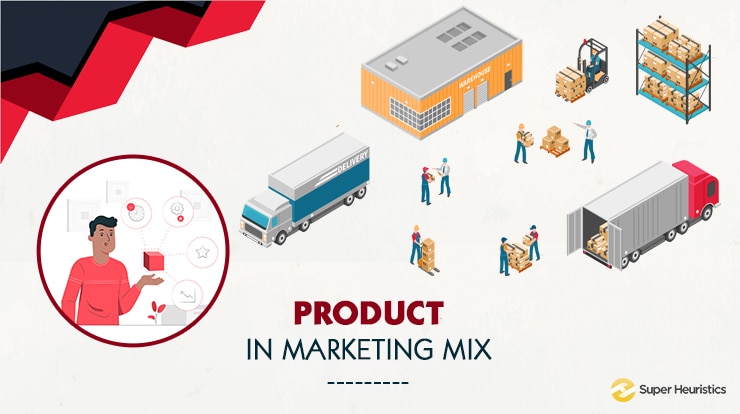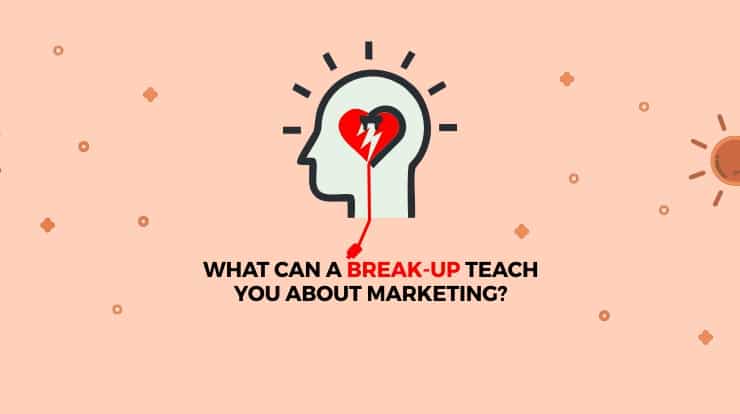
Retail Management is an integral part of Marketing. And I am not saying it just for the sake of it. If you begin to think of any business that operates in the B2C context, the customer touch point is the retailer. So before we get into knowing what are the different types of retailers that you should know about, let’s understand retailing a little better.

Who is a Retailer?
A retailer is that last point in the value chain that directly interacts with the customer to deliver the value. For that matter, in the context of retailing and retail management, I will refer to all the customers as ‘shoppers’. It makes sense, doesn’t it?
Now, if you realize, for a shopper like you since the retailer is the interaction point for your brand, the retailer becomes a part of the brand itself.
What is the ambiance like? What product assortment does the retailer have? These could be taken as examples of all those things that form an integral part of the shoppers’ buying decision.
And just when you thought that there was just so much to it, there’s more. Shopper behavior varies across the types of retailers. So, for a specialty retailer who is selling a product of yours, the ambiance of the shop may be important for the shopper. As a matter of fact, it may determine the impression that the shopper has of your brand.
But at the same time, if that same product being sold at a small retailer, the product availability might be the biggest determinant for the shopper preference rather than the ambiance.
Therefore, as a marketer, it is incumbent upon you to know the different types of retailers.
In fact, for you, it is not only important to just know what are the different types of retailers. It is also important for you to understand the factors that determine the difference among them. This would serve as a good foundation for you to create marketing strategies that will have a rock-solid distribution strategy.
What are the different types of retailers?
Now, there are quite a lot of ways you can classify the different types of retail businesses. I spent some time doing a classification of retailers that covers the entire canvas comprehensively.
The different types of retailers can be broadly classified as
- Food Retail
- General Merchandise
Each of these two has further classifications. I have captured the most important ones in the image below.

Now, as I take you through each of these types of retailers, you will begin to realize the parameters on which retailers are differentiated.
Once you read through this and understand the entire classifications, you will be in a comfortable position to decide which kind of retailers are appropriate for your product.
Read More: Marketing Plan and ROI – How to calculate it?
Food Retail
Food Retail is a categorization of the retail stores which includes all the stores that keep any kind of food item. So, a store like Big Bazaar in India or a Walmart in the USA comes under food retail. Whereas, a store like Croma, which sells electronics, does not come in the category. The further classification within food retail is:
A. Convenience Stores
This store format is based upon the idea of, as the name suggests, convenience. These are small stores that offer a limited assortment of products. Some of the defining characteristics of the convenience stores are:
Store Size: 3000 – 5000 square-foot
Location: Residential and corporate areas
Number of SKUs: 2000 – 3000
Percentage of Food: 90%
Prices: High
Gross Margin: Highest (25-30%)
One of the finest examples of Convenience stores is the 7-Eleven stores in Singapore. Their store location density is amazing. While I was there in Singapore for a consulting project I could find a 7-Eleven on almost every street and one every next turn.
This is the first characteristic for convenience stores. They are everywhere for everyone. For a marketer, this is should be a point to be noted for you. If you have a product which is for everyone, with no demographic classification or restrictions per se, then convenience stores really do a good job of getting near to the customers.
Read More: Use Psychographic Segmentation to make someone fall in love with you
B. Warehouse Club
Have you heard of Cash & Carry format? Warehouse clubs are just that. These are large stores which aim to provide products in a larger volume to small businesses/small retailers and individuals. Imagine this, a warehouse club is a retailer, not a wholesaler, but is extremely economical in terms of price among all the retailer types.
Store Size: 100,000 – 150,000 square-foot
Location: Far off places where real estate is cheaper
Number of SKUs: 20,000 – 30,000
Percentage of Food: 60%
Prices: Lowest
Gross Margin: Lowest (10-12%)
Metro Cash & Carry stores are one of the finest examples of this format. It allows entry only through membership. For the membership, you need to have proof of being a merchant/retailer.
You walk into any Metro Cash & Carry outlet and you shall see big aisles and tall racks. The products would be stacked up in the boxes in which they were procured from the supplier. The customer is encouraged to buy in bulk through attractive bulk pricing.
These stores require huge real estate. Most of the times, their dedicated parking area is as big as the store itself!
C. Supermarkets
Supermarkets are bigger than the convenience stores and carry a larger number of SKUs and deeper assortments than the convenience. And this is pretty obvious. Supermarkets are pretty much like convenience stores that operate in a much large store size than them.
Store Size: 70,000 – 90,000 square-foot
Location: Near residential areas
Number of SKUs: 30,000 – 40,000
Percentage of Food: 75%
Prices: Average
Gross Margin: High (18-20%)
People familiar with the Indian supermarket chain Big Bazaar should consider it as an example of this. These are stores that are located really close to residential areas. Moreover, you need not have many of these stores in one area.
Usually, supermarkets, warehouse clubs, and hypermarkets (which I will be explaining just after this) attract people from far off areas. Supermarkets do offer discounts but these discounts are lesser comparable to what a shopper will get at a Hypermarket or obviously at Warehouse clubs.
Another interesting thing here, what do you think Croma (the electronics store) is? It doesn’t offer any food but in the stores but it seems to qualify in this category in terms of other parameters.
The answer is you can consider Croma to be a supermarket but since it is not a food retailer, it is referred to as a ‘departmental store’.
D. Hypermarket
Hypermarkets or what you may also call Supercenters are really big shopping stores. If you can visualize a big Walmart store then you know how a hypermarket looks like.
As a matter of fact, you may say that Hypermarkets are different from Supermarkets but then that difference is only in terms of the food assortment. A hypermarket has a lower percentage of food as compared to a supermarket. Whereas, in terms of absolute volume the food items (including groceries) are usually more than you would find in a supermarket.
This is because a Hypermarket runs with a concept of everything under one roof and it brings together a supermarket and a departmental store.
At a hypermarket, customers usually come in with the intention of buying groceries and other items in bulk for home use. In that sense, it offers a one-stop solution for a lot of things.
Store Size: 160,000 – 200,000 square-foot
Location: In commercial areas
Number of SKUs: 100,000 – 150,000
Percentage of Food: 40%
Prices: Low
Gross Margin: Low (15-20%)
I mentioned about Walmart having hypermarkets. An Indian example of this will be D-Mart. This highly profitable and operationally efficient company has emerged as a really strong player in recent times.
I happen to be doing a detailed study of D-Mart at the moment and I am beginning to learn a lot of good things about its strategic marketing decisions.
I shall do a post on that if you want me to.
Now, this was the classification of retailers in the Food retail category. I hope you have found the answer to the question what are the different types of retailers. You can expect the next part of this post in a couple of days where I will explain what are the different types of retailers in the General Merchandise format.
Read Part 2 here – What are the different types of Retailers? (Part 2 of 2)
You may have a lot of questions in your mind regarding what I have shared. At least I had when I first learned it. Feel free to post your questions and comments below.






